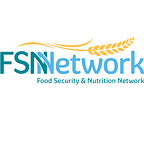How Can Aid Actors Work with Informal Support Networks in Yemen?
By Daniela Maquera Sardon & Maha Elsamahi
During crises, communities are often their own first responders. In Taiz, Yemen, neighborhood kitchens fed the hungry; households received and hosted fleeing relatives; and youth raised money through social media apps to provide resources to the most vulnerable households in their communities. From food and shelter to emotional support and counsel, households and their social connections shared resources to help one another cope and survive.
Given the role that informal support networks play during crises, we wanted to understand how Mercy Corps — and other implementing organizations — can develop better programming that strengthens and, at the very least, does not undermine these critical sources of coping. This is the focus of our new report, “Sharing to Survive: Investigating the Role of Social Networks During Yemen’s Humanitarian Crisis,” produced under the Resilience, Evaluation, Analysis and Learning (REAL) Award, which is funded by the USAID Center for Resilience. Our research was guided by three questions:
- How are households relying on informal support networks to cope and survive in the protracted crisis?
- How have conflict, resource depletion, and the COVID-19 pandemic affected social connectedness and households’ ability to rely on their networks?
- How is external assistance affecting informal social protection networks? What are the implications for the design, provision, and monitoring of aid?
Our study found that aid actors often missed opportunities to integrate understandings of these networks into their efforts. This was primarily because of aid actors’ limited contextualized understanding of social connections and informal support networks.
In February this year, REAL convened a discussion around findings and recommendations from the report. Panelists underscored the high cost of continuing to do business as usual when it comes to social connections and the untapped opportunity for aid actors to leverage and strengthen informal support systems in Yemen.
The discussion emphasized that current approaches to humanitarian programming, including targeting criteria and policies around sharing assistance, have eroded trust in aid actors and left out key vulnerable and marginalized groups. This has been magnified by aid actors’ failure to account for informal support networks in their activities. As panelist Yazeed al-Jeddawy, a Yemen Peace Forum fellow and research consultant, explained,
“It is imperative for humanitarian actors to seek out an adequate understanding of social networks, support them and ensure they are not negatively impacted by the working ways of aid delivery.”
Panelists underscored a number of challenges for aid actors when it comes to harnessing the power of social networks in Yemen. In most areas of the humanitarian response, decision-making has largely been kept out of the hands of Yemenis, and most communication and accountability mechanisms do not allow Yemeni voices and perspectives to be taken into consideration. This has magnified confusion and created a disconnect between NGO staff, community leaders, and households.
While local power dynamics have largely been overlooked during the response, community-based targeting approaches could address some of these barriers and mitigate the tension and confusion between aid actors and community members. As panelist Emily Henderson, a humanitarian adviser for the U.K. Foreign, Commonwealth & Development Office (FCDO) Yemen, put it,
“We should consider rethinking targeting beyond the crafting of indicators and be cognizant of local redistributions.”
While we did not have enough time to hear from attendees during the panel, your thoughts and comments in the days since raised many great questions and ideas. We find ourselves asking what is the cost of NOT engaging or thinking about informal support networks? What will it take for us to program for and work through these networks, and how can we best learn from one another as we move forward? As our partners and programming teams are doing more with less, how can we start building a community of informed practitioners?
We turn the discussion over to you.
This blog is written by:
Daniela Maquera Sardon, Mercy Corps
Maha Elsamahi, Mercy Corps
